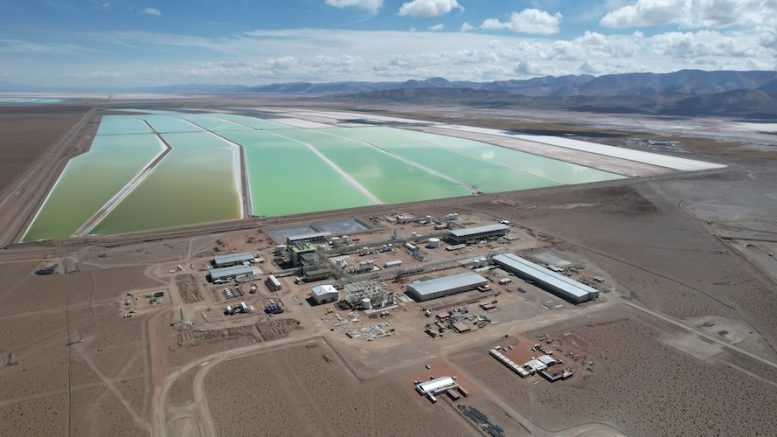Argentina, the world’s fourth largest global lithium supplier, says it’s on track to reach 200,000 tonnes annual production by 2025. That’s thanks to the development of six new projects in addition to two existing lithium mines, according to information released by the Mining Secretariat.
The country currently has an installed production capacity of 37,500 tonnes of lithium carbonate and actually produces 33,000 tonnes.
The growth in production means lithium exports are expected to reach US$5.6 billion by 2025. The country reports that lithium exports grew by 235% in 2022, to almost $700 million.
The projections are based on rising sales from Argentina’s two active mines, one located in the Olaroz salt flat in the northwestern Jujuy province and operated by Sales de Jujuy, a subsidiary of Australia’s Allkem (TSX: AKE; ASX: AKE), and the other located in the Hombre Muerto salt flat in the northwestern Catamarca province and operated by America’s Livent (NYSE: LTHM).
According to the state news agency Telam, Sales de Jujuy is planning to add 25,000 tonnes to its production in the next couple of years, while Livent plans to add 20,000 tonnes. These amounts will be complemented by mid-decade by production from the Cauchari Olaroz (owned by China’s Ganfeng Lithium and Lithium Americas [TSX: LAC; NYSE: LAC]) and Mariana developments (Ganfeng Lithium); the Centenario-Ratones being advanced by France’s Eramet; the Sal de Oro project owned by South Korea’s Posco; Allkem’s Sal de Vida project, and the Tres Quebradas development owned by China’s Zijin Mining.
Looking forward to 2030, official projections see annual exports reaching US$8.7 billion, supported by the operation of 11 lithium mines.
Argentina is the world’s fourth largest lithium producer after Australia, Chile and China and is part of the so-called Lithium Triangle, where more than half of the world’s identified resources of the mineral are found. The Triangle is a unique stripe of high-altitude land covered with lakes and white salt flats that straddles Chile, Argentina and Bolivia.


What about Rio Tinto Rincon project?